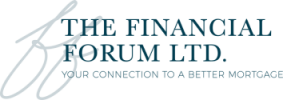Most homeowners use the word – equity without knowing what it means. Well, the term equity refers to the value of your property minus the mortgage. For example, if your home is worth $350,000 one day and $400,000 the next day, you have $50,000 in equity.
You can use home equity for a variety of reasons. Most homeowners prefer to use equity for renovation, investing in other property, getting rid of debt and even for the much-needed vacation. The good news is that the mortgage industry has a number of flexible products you can use to acquire that extra cash.
Like other financial decisions, you should read the fine print especially if you want to make the most of equity products. The following are the 3 most popular ways to access the equity in your home.
Home Equity Line of Credit
A HELOC basically is a line of the credit that is secured against your property. The good thing about this option is that you can set it up as a mortgage if you don’t need all of the money at once. What you need to remember is that HELOC usually comes in a second position and you can get a loan up to 65% of your property’s value.
Some homeowners combine a HELOC with amortizing mortgage and this allows you to stretch the loan limit for up to 80% of your property value. If you want to get approved for a HELOC, you need to at least have 20% of equity and as you get more equity; you can ask the line of credit to be increased.
*Increasing equity limit requires a new application and approval process.
HELOCs are quite similar to any other line of credit you receive. That’s right. All you have to do is take care of monthly payments and as long as the traditional mortgage is paid on time, the available limit of HELOC increases.
An important thing to remember here is that HELOC is tied to your home and has low-interest rates. However, the interest rate that you are required to pay depends on the prime lending rate and it can increase as variable rate increases. Some lenders also offer you the option of locking in a specific portion of your HELOC interest rate.
You would also come across lenders that allow you to add a HELOC to your existing first mortgage. In this case, lenders would require an appraisal and the amount of loan you get would depend on the value of the property.
Second Mortgage or Home Equity Loans
Most Canadians confuse a home equity loan with a HELOC, but they are two entirely different products. If you apply for home equity loans, you will receive funds in a lump sum amount, unlike HELOC where you will receive funds as you need it. On the other hand, the interest rate and monthly payment associated with home equity loans are fixed so you can budget accordingly.
Second mortgage or home equity loans are mostly marketed to homeowners who can’t qualify for better options. What’s even better is that you can get a lump sum amount of money for a single large expense.
Some homeowners prefer to use a home equity loan as a short-term solution until the first mortgage matures. This loan allows you to borrow up to 80% of the appraised value of your home minus the first balance of the mortgage.
If you have an exceptional credit history, you might be able to secure a second mortgage or home equity loan through a bank. And if you decide to use this option, the combined value of your first and second mortgage should not exceed 80% of your property value.
If the combined value of both your mortgages exceeds 80% of your property value, you might be asked to pay a higher interest rate along with default mortgage insurance. Some homeowners decide to go for a private lender where default mortgage insurance isn’t applicable. This is because, in the long run, you might end up paying less money to the private lender even though they would charge you a higher interest rate.
Financial experts suggest that you should only opt for a home equity loan if you can repay it within a short period of time like two or three years.
Refinancing
Refinancing is an option that allows you to take out the equity in your home and add it to your current loan balance. Perhaps the best thing about refinancing is that if the interest rates are lower than that you were paying when you got your mortgage, you can make the most of this advantage as well.
If you decide to go for refinancing, you must have at least 20% equity in your life. This option is particularly popular with homeowners who are suffering from high-interest debt. Refinancing allows you to take up to 80% of the appraised value of your home minus the amount you are left to pay.
Here’s a tricky part. If your mortgage is up for renewal or there is minimum/no fee associated with breaking your mortgage contract, refinancing is a good option to consider. However, if you will be hit with big penalties by breaking your contract, refinancing is certainly not the best deal.
Another risk of refinancing is that you are reducing the equity in your home. Similarly, the strategy is less likely to work if your first mortgage has a typically low-interest rate in comparison to the current rate. Some lenders might offer you to blend the two interest rates when refinancing, but things can get complicated. You can ask your lender to know more about the blended strategy and how it works.
Overall, refinancing has its own set of advantages but like any other financial decision, there are certain risks involved as well. Remember that your mortgage broker will be able to guide you through any questions you might have about home equity strategies.




